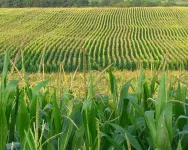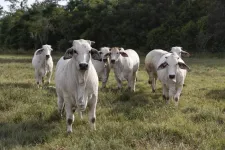(Press-News.org) A new report offers lessons for post-pandemic transit policy and planning. Notably, it calls for planners to downplay the role of offices in transit station areas and increase the opportunity for people to live in them. Researchers Arthur C. Nelson and Robert Hibberd published "Transit Station Area Development and Demographic Outcomes (PDF)," updating their longitudinal analysis of the impacts of development near transit stations.
The new report includes a foreword by U.S. Congressman Earl Blumenauer. An excerpt reads:
"In this report, Arthur C. Nelson, Emeritus Professor of Urban Planning and Real Estate Development at the University of Arizona, and Robert Hibberd, a doctoral student, chronical numerous economic and demographic changes that occurred in transit station areas between the Great Recession that ended in 2009 and the pandemic that started in 2020. Through detailed analysis of 57 transit systems operating in 42 metropolitan areas, they find that station areas accounted for more than 20 percent of regional job and household growth. This 20 percent growth occurred on less than one percent of the urbanized land base.
The benefits of that 20 percent growth on a tiny amount of land are significant: reduced greenhouse gas emissions, reduced farmland and open space loss, increased walkability, increased access to transit, and more time with family and friends instead of burning a gallon of gas to buy a gallon of milk. Can this trend be sustained in the post-pandemic era? Yes. But sustaining it will require new approaches, new ways of thinking, and new ways of investing."
The research, conducted at the University of Arizona, was supported by the National Institute for Transportation and Communities (NITC), a U.S. DOT-funded university transportation center headquartered at Portland State University (PSU). Nelson and his wife Monika, both PSU alumni, recently established the Nelson Endowed Doctoral & Scholar Awards to support emerging scholars in PSU's College of Urban and Public Affairs.
Key Findings: A Wealth of Data
The report offers a comprehensive assessment of the extent to which transit station areas:
Attract jobs, people and households,
Influence commuting mode choice,
Reduce driving, as well as transportation costs,
Influence real estate value, and
Engender gentrification.
The report also outlines policy approaches to help mitigate adverse gentrification outcomes. The principal danger of gentrification is that existing lower-income households are pushed out of their homes and replaced by higher income households because of transit investments. As demand grows for development near transit stations, gentrification pressures will increase.
Make Living Near Transit Easier For Families
Most people moving into transit station areas are established households, including many with children. The National Association of Realtors' 2023 Community Preference Survey revealed that more than half (53 percent) of respondents would choose to own or rent an apartment or townhouse if they had an easy walk to shops and restaurants and a shorter commute to work. More than three-quarters (78 percent) would be willing to spend more to live in such a community.
It's clear that the demand for living in walkable communities far outweighs the supply. About 70 million households in 2023 stated their preference for living within walking distance of restaurants, shops and services; yet only about 17 million lived in those kinds of communities now. This leaves a gap of 53 million households. To bridge this gap, the researchers put forward several initiatives.
Planners should:
Reimagine transit-oriented developments (TODs) as including retail, food, arts, entertainment, and recreation for those who live there.
Increase opportunities to walk and bike within transit station areas, and between them.
Downplay the role of offices. The concept of working from home often means working in “third places” such as local coffee shops, libraries, and open-air venues among others.
Local governments should:
Step up their efforts to facilitate residential and complementary development in transit station areas, especially those outside of downtowns.
Why is this research important?
Station areas—meaning land within 800 meters of light rail transit (LRT), streetcar transit (SCT), bus rapid transit (BRT), and commuter rail transit (CRT) stations—added millions of new jobs and hundreds of thousands of new households during the study period. Nelson and Hibberd offer important insights and considerations for ensuring that these areas are developed to best meet the needs of people in these communities.
Want to learn more? Watch a recorded webinar from March 2021, or read our earlier recaps of the research that delve into how transit stations impact the locations of jobs; where people live; and the costs of real estate rents.
Investigations into this topic by Nelson (and more recently Hibberd) span more than a decade:
(2012) Do TODs Make a Difference?
(2013) National Study of BRT Development Outcomes
(2015) Do TODs Make A Difference? Phase 2
(2019) Updating and Expanding LRT/BRT/SCT/CRT Data and Analysis
(2019) Nationwide Worker Data Repository to Analyze Transit Outcomes - Use this data repository to explore links between transit station proximity and real estate rents, jobs, people, and housing.
(2020) Transit Impacts on Jobs, People and Real Estate
(2023) Job-Worker Balance & Polycentric Transit-Oriented Development: Toward Indices and Spatio-temporal Trends (Hibberd's doctoral research project)
Job-Worker Balance & Polycentric Transit-Oriented Development: Toward Indices and Spatio-temporal Trends
Robert Hibberd received his doctorate from the University of Arizona in 2024. His dissertation examines how transit-oriented development (TOD) affects employment access and addresses urban equity challenges, particularly in the context of essential workers and the COVID-19 pandemic. about the research.
This research was funded by the National Institute for Transportation and Communities, with additional support from the University of Arizona, Tucson.
The National Institute for Transportation and Communities (NITC) is one of seven U.S. Department of Transportation national university transportation centers. NITC is a program of the Transportation Research and Education Center (TREC) at Portland State University. This PSU-led research partnership also includes the Oregon Institute of Technology, University of Arizona, University of Oregon, University of Texas at Arlington and University of Utah. We pursue our theme — improving mobility of people and goods to build strong communities — through research, education and technology transfer.
END
Homes, not offices: Researchers recommend changes to transit station area development after COVID-19
2024-06-14
ELSE PRESS RELEASES FROM THIS DATE:
AI can help doctors make better decisions and save lives
2024-06-13
New York, NY [June 13, 2024]—Deploying and evaluating a machine learning intervention to improve clinical care and patient outcomes is a key step in moving clinical deterioration models from byte to bedside, according to a June 13 editorial in Critical Care Medicine that comments on a Mount Sinai study published in the same issue. The main study found that hospitalized patients were 43 percent more likely to have their care escalated and significantly less likely to die if their care team received AI-generated alerts signaling adverse changes in their health. ...
UMD awarded U.S. Department of State grant to expand education abroad
2024-06-13
COLLEGE PARK, Md. – The University of Maryland School of Public Health, together with Bowie State University, is expanding its study abroad options for marginalized faculty and students and for students who are Pell Grant recipients, in part due to a grant announced June 13 from the U.S. State Department. The schools were among a select 37 institutions nationwide to receive this 2024 grant.
The award will connect underrepresented faculty and students from both universities with opportunities to study global public health in Rwanda, focusing on countering violent extremism, prevention of emerging tropical infectious diseases, ...
Q&A: Finding varieties of corn that are adapted to future climates
2024-06-13
Corn is one of the planet’s most important crops. It not only provides sweet kernels to flavor many dishes, but it’s also used in oils, as a sweetener syrup, and as a feed crop for livestock. Corn has been bred to maximize its yield on farms around the world.
But what will happen under climate change? Research led by the University of Washington combined climate projections with plant models to determine what combination of traits might be best adapted to future climates. The study used projections of weather and climate across ...
Does exercise in greenspace boost the individual health benefits of each?
2024-06-13
By Ann Kellett, Texas A&M University School of Public Health
Health practitioners and fitness buffs have long known that regular physical activity offers numerous health benefits, including the prevention of chronic conditions such as cardiovascular disease, diabetes, some cancers and osteoporosis.
In addition, exercise enhances immune function and pain control, reduces fall risk and extends life expectancy. Mental health benefits include improved mood, reduced anxiety and decreased ...
New insights into the brain regions involved in paranoia
2024-06-13
New Haven, Conn. — The capacity to adjust beliefs about one’s actions and their consequences in a constantly changing environment is a defining characteristic of advanced cognition. Disruptions to this ability, however, can negatively affect cognition and behavior, leading to such states of mind as paranoia, or the belief that others intend to harm us.
In a new study, Yale scientists uncover how one specific region of the brain might causally provoke these feelings of paranoia.
Their novel approach — which involved aligning data collected from monkeys with human data — also offers ...
Privacy-enhancing browser extensions fail to meet user needs, new NYU Tandon School of Engineering study finds
2024-06-13
Popular web browser extensions designed to protect user privacy and block online ads are falling short, according to NYU Tandon School of Engineering researchers, who are proposing new measurement methodologies to better uncover and quantify these shortcomings.
Led by Rachel Greenstadt, professor in the NYU Tandon Computer Science and Engineering (CSE) Department, the team will present its study at the 19th ACM ASIA Conference on Computer and Communications Security, taking place July 1–5, 2024 in Singapore.
Through ...
Sweaty cattle may boost food security in a warming world
2024-06-13
Sweaty cows may not sound like the most exciting company, but in a warming world, researchers can’t get enough of them.
When cattle are too hot, they tend to stop eating, said Raluca Mateescu, University of Florida Institute of Food and Agricultural Sciences (UF/IFAS) professor in the department of animal science. This affects the cattle’s health and growth and threatens the longevity of the food supply coming from that herd.
Climate change is making it more difficult to raise cattle – growth and reproduction are affected by heat – so ...
Researchers issue ‘call to action’ for data on more diverse range of dog owners
2024-06-13
Virginia Tech’s Audrey Ruple and Courtney Sexton, already deeply involved in data collection and analysis for dog health and connections to humans through the Dog Aging Project, are imploring fellow scientists to cast the net even wider for data on the shared environments of humans and dogs in a perspective piece that appears this month in the journal Science.
“Human environments and the impacts of environmental factors can vary substantially, and this variation should be captured by future studies of dogs to more accurately assess exposure risks for different and vulnerable populations,” ...
UTA awards more than $130,000 to spark new research
2024-06-13
The Office of the Vice President for Research and Innovation at The University of Texas at Arlington has granted 10 Research Enhancement Program (REP) awards valued at more than $130,000 to support new research initiatives.
The REP grant serves as seed funding for launching new research, providing a foundation for recipients to pursue future research and funding from external sources.
“UTA is committed to fostering a culture of innovation and research discoveries for our community of scholars,” said Kate C. Miller, vice ...
The Protein Society announces its Protein Science 2023 Best Paper recipients
2024-06-13
LOS ANGELES, CA
The Protein Society is proud to announce that the winners of the 2023 Protein Science Best Paper awards are Evan T. Liechty from the University of Colorado, USA, and Sophie Rizzo, from Lehigh University, USA.
Evan T. Liechty
Protein Science 2023 August;32(8):e4719.doi:10.1002/pro.4719
Analysis of neutral mutational drift in an allosteric enzyme
Evan T. Liechty1, Andrew Hren1, Levi Kramer1, Gregory Donovan1, Anika J. Friedman1, Michael R. Shirts1, Jerome M. Fox1
1Department of Chemical and ...



